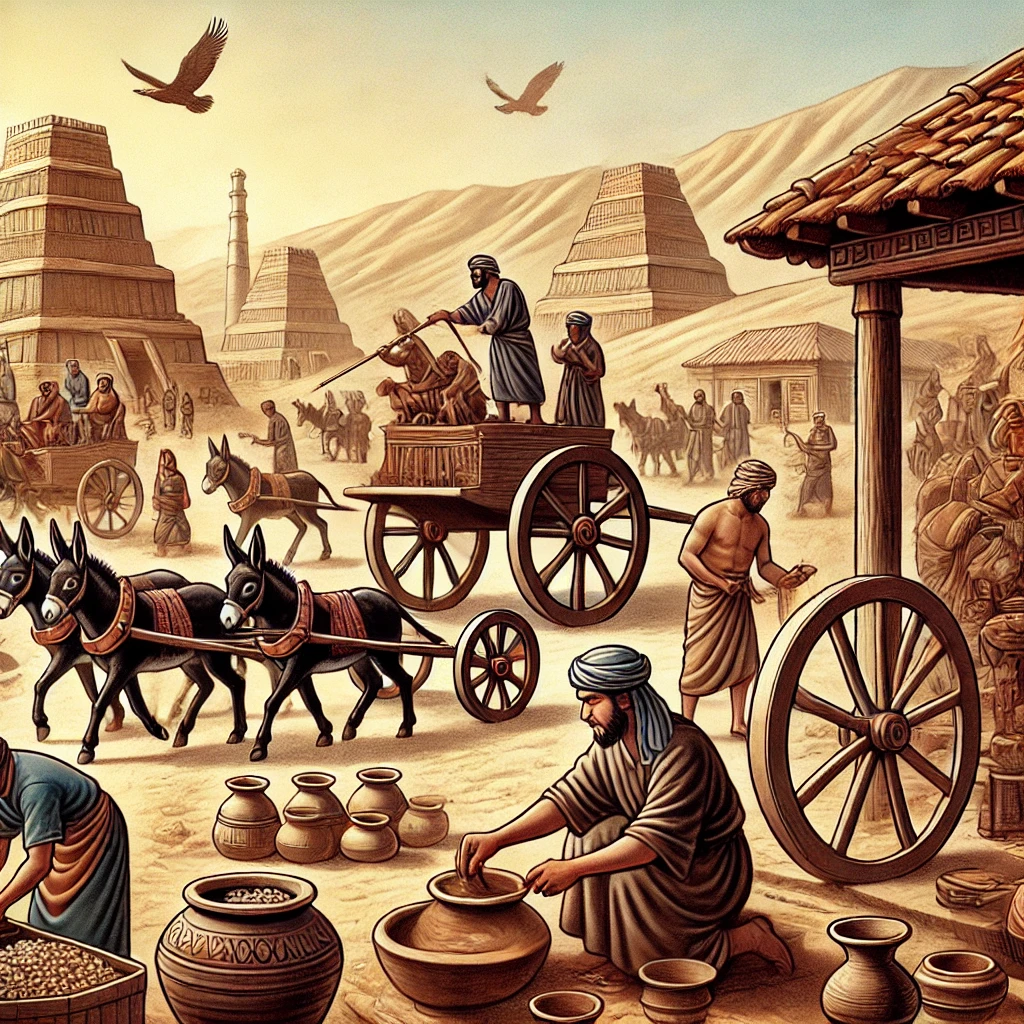The invention of the Sumerians wheel marked a significant technological advancement in ancient society. This innovative device not only transformed daily tasks but also revolutionized agriculture and transportation. By allowing easier movement of goods and people, the Sumerians wheel greatly enhanced trade and economic growth. Understanding how the Sumerians utilized this groundbreaking invention provides valuable insight into their culture and practical ingenuity, showcasing their lasting impact on civilization.
Origins and Invention of the Wheel in Sumerian Society
The invention of the Sumerians wheel marked a pivotal moment in ancient civilization. Emerging around 3,500 BCE in Mesopotamia, this innovative tool transformed various aspects of daily life.
Key Points about the Sumerians Wheel:
- Materials Used: Early wheels were crafted from solid wood or made of several wooden planks joined together.
- Design: Initially, wheels were simple discs. Over time, they evolved to include spokes, enhancing durability and performance.
- Purpose: The primary function of the wheel was in transportation, facilitating the movement of goods and people.
Comparison of Wheel Design Evolution
| Design Feature | Early Wheel | Advanced Wheel |
|---|---|---|
| Structure | Solid disc | Spoked design |
| Weight | Heavier | Lighter and more agile |
| Efficiency | Limited mobility | Enhanced maneuverability |
The Sumerians wheel significantly influenced their society, enabling advancements in agriculture, trade, and engineering. Thus, it served as a foundational innovation that spurred further developments in ancient technology.
Applications of the Wheel in Agriculture and Transportation
The Sumerians wheel revolutionized various aspects of ancient life, particularly in agriculture and transportation. This innovation allowed Sumerians to enhance productivity and efficiency in several ways:
In Agriculture:
- Plowing: The introduction of wheeled plows dramatically improved soil cultivation. The Sumerians could cultivate larger fields effectively, leading to increased crop yields.
- Irrigation Systems: Utilizing the wheel in irrigation technology allowed for better water management, optimizing farming outputs during dry seasons.
In Transportation:
- Cart Development: The Sumerians developed the first two-wheeled carts. These carts enabled easier movement of goods and people across vast distances.
- Trade Expansion: With the ability to transport surplus crops and goods, trade networks flourished. This opened up new markets and fostered economic growth.
Comparison of Applications:
| Application | Agriculture | Transportation |
|---|---|---|
| Primary Use | Enhanced farming efficiency | Facilitated trade and mobility |
| Technological Impact | Invention of the plow | Development of carts |
| Economic Benefits | Increased food production | Expansion of trade networks |
In summary, the Sumerians wheel played a crucial role in transforming agriculture and transportation, leading to significant societal advancements.
Impact of the Wheel on Sumerian Trade and Economy
The introduction of the Sumerians wheel significantly transformed trade and economic activities in ancient Mesopotamia. By facilitating transportation, it created new opportunities for commerce and resource distribution. Here’s how the Sumerians wheel influenced their economy:
- Enhanced Trade Routes: The wheel allowed for the development of carts, enabling merchants to transport goods over longer distances efficiently.
- Increased Specialization: With improved transport, different cities could specialize in producing certain goods, leading to a vibrant exchange system.
- Urban Growth: Trade stimulated urbanization, as trade centers emerged, boosting local economies.
Comparison Table: Impact of the Wheel
| Aspect | Before the Wheel | After the Wheel |
|---|---|---|
| Transport | Animal-drawn sleds | Wheeled carts |
| Trade Volume | Limited | Expanded significantly |
| Goods Variety | Local goods only | Diverse goods |
| Distance | Short distances | Long-distance trade |
In summary, the Sumerians wheel revolutionized their trade mechanisms, fostering economic growth and contributing to societal advancements.
Frequently Asked Questions
What was the primary purpose of the wheel in Sumerian society?
The primary purpose of the wheel in Sumerian society was to enhance transportation and facilitate trade. The invention of the wheel around 3500 BC had a revolutionary impact, allowing for the development of wheeled vehicles such as carts and chariots. This advancement enabled the Sumerians to transport goods more efficiently over long distances, significantly boosting trade capabilities and contributing to the economic growth of their civilization.
How did the invention of the wheel influence Sumerian agriculture?
The invention of the wheel had a profound influence on Sumerian agriculture by supporting the development of ox-drawn plows. These wheeled plows made it easier to till soil and increase agricultural productivity. With improved farming equipment, Sumerians could cultivate larger fields and produce more crops, which helped sustain a growing population and led to advancements in their agricultural practices and techniques.
What materials did the Sumerians use to make wheels?
Sumerian wheels were initially made from solid wood and consisted of a simple disk shape. As craftsmanship advanced, they began to create wheels with a spoked design, offering greater strength and lighter weight for improved mobility. The Sumerians used readily available materials such as cedar and other types of wood, which contributed to the wheels’ durability while allowing for effective transport and use in various applications within their society.
Did the Sumerians use wheels for anything other than transportation?
Yes, the Sumerians utilized wheels for various purposes beyond transportation. Notably, they applied the rotating mechanism of the wheel to pottery-making, resulting in the invention of the potter’s wheel. This innovative tool allowed for a much more efficient and effective way to shape clay, leading to the production of uniform and finely crafted pottery, which played a crucial role in their trade and daily life.


